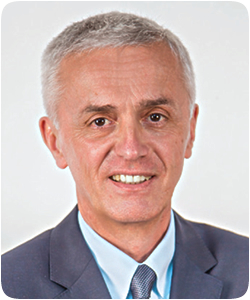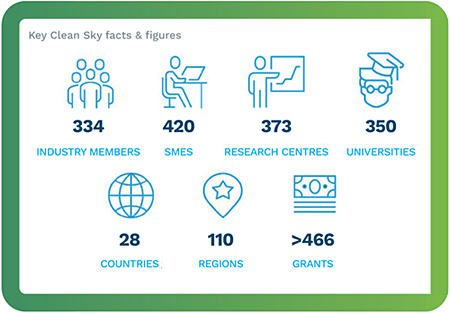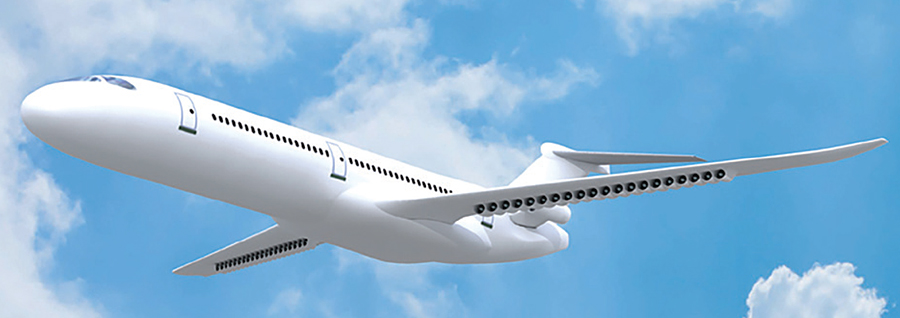 A key priority on the European Parliament’s and new European Commission's determined agenda to tackle climate change will be securing impact-driven European research and innovation. Building on the Horizon 2020 programme, Horizon Europe will provide an even greater opportunity to steer further excellence into European research, making sure that outcomes are impactful and meeting far-reaching objectives such as mitigating damage to the environment.
A key priority on the European Parliament’s and new European Commission's determined agenda to tackle climate change will be securing impact-driven European research and innovation. Building on the Horizon 2020 programme, Horizon Europe will provide an even greater opportunity to steer further excellence into European research, making sure that outcomes are impactful and meeting far-reaching objectives such as mitigating damage to the environment.
In that respect, European universities, research organisations and industrial companies are continuing to work on a technical proposal for a new Clean Aviation Partnership programme. This programme will aim to drive towards a deep decarbonisation of aviation, supporting the European Green Deal, leading to a carbon-free society by 2050, and taking European aviation and aeronautics to the forefront globally in this transition.
A major step in that direction took place at the Paris Air Show - Le Bourget in June 2019. Led by Airbus CEO Guillaume Faury, Safran CEO Philippe Petitcolin, Rolls-Royce CEO Warren East and Leonardo CEO Alessandro Profumo, twenty-three Aeronautics Industry leaders, Research Organisations and University Associations across Europe signed a Joint Declaration to express their strong commitment to a future European partnership that can lead the way towards a deep decarbonisation of aviation by 2050. The Joint Declaration made it clear that the partnership should build on the progress made under the Clean Sky programmes, and develop further-reaching innovations and concrete roadmaps for their implementation in a new breed of aircraft from 2030 and beyond. To highlight that these ambitious aims can only be achieved through cooperation between the public and private sectors, the Declaration was handed over to Jean-Eric Paquet, Director-General for Research and Innovation, European Commission.
 Initial analysis has identified a number of ambitious zero- and low-emission concepts. These include full electric and hybrid-electric solutions applicable to regional and short-range categories. Hydrogen or low-carbon fuel-powered architectures using advanced aircraft configurations and ultra-efficient gas turbines will cover the medium and long-range segments. As a consequence, substantial research activity will need to be actively aligned via an Innovation Architecture and connected to the future Partnership, ranging from Member States’ national innovation funding initiatives in aeronautical fields to synergy areas within Horizon Europe, all supported by commonly agreed goals and objectives within an integrated and comprehensive roadmap.
Initial analysis has identified a number of ambitious zero- and low-emission concepts. These include full electric and hybrid-electric solutions applicable to regional and short-range categories. Hydrogen or low-carbon fuel-powered architectures using advanced aircraft configurations and ultra-efficient gas turbines will cover the medium and long-range segments. As a consequence, substantial research activity will need to be actively aligned via an Innovation Architecture and connected to the future Partnership, ranging from Member States’ national innovation funding initiatives in aeronautical fields to synergy areas within Horizon Europe, all supported by commonly agreed goals and objectives within an integrated and comprehensive roadmap.
We are not talking about a mere continuation from Clean Sky 2 to a future Clean Aviation Partnership. This is a vital and necessary transformation to successfully take on the challenge ahead.
In parallel, Clean Sky 2 is still running with full steam ahead! Now halfway through the programme, it is very gratifying to see that our vast eco-system of researchers and engineers is delivering cutting-edge results for greener aviation in fields such as propulsion, systems, aerostructures, aerodynamics, and overall aircraft configuration. These technologies are targeted for integration into global airline and operator fleets within the next two decades.
To mention a few of these key Clean Sky 2 technologies, one particular example is the Ultra High Bypass Ratio engine demonstrator UltraFan, which aims to reach a potential fuel improvement of approximately 10% compared to 2014 reference aircraft. Standout technologies include the composite titanium fan blades, which have taken a lot of weight out of the engine design compared to the previous standard, and the power gearbox technology, which aims to achieve the best optimum operating efficiency of the engine core and fan. The first wind tunnel tests are planned for 2020 for jet engine noise and installation assessment, and a first flight is scheduled for 2023.
In our Rotorcraft technology platform, the RACER demonstrator's first flight is scheduled for the end of 2020. It features an aerodynamic shape, lightweight materials and equipment integrated in a streamlined design to create a vehicle that flies 50% faster than conventional helicopters.

DRAGON research concept for distributed electric propulsion (©ONERA)
Another key focus for Clean Sky 2, and indeed any future European aviation research programme, is hybrid/electric propulsion. The E-Fan X flight demonstrator is an important stepping-stone towards hybrid-electric commercial aircraft at the scale of today's single-aisle family. Co-funded by the British ATI Programme and Clean Sky 2, the project will make use of important building blocks and results from Clean Sky 2 in its ambitious next step towards flight demonstration. The assembly and test of these
building blocks (2MW generator and associated power electronics for instance) will be conducted by 2021.
We will need excellent results from these projects, and the many more we are working on, in order to reach our ambitious objectives!
Contact details:
For more information on results, news and key events, please visit: www.cleansky.eu